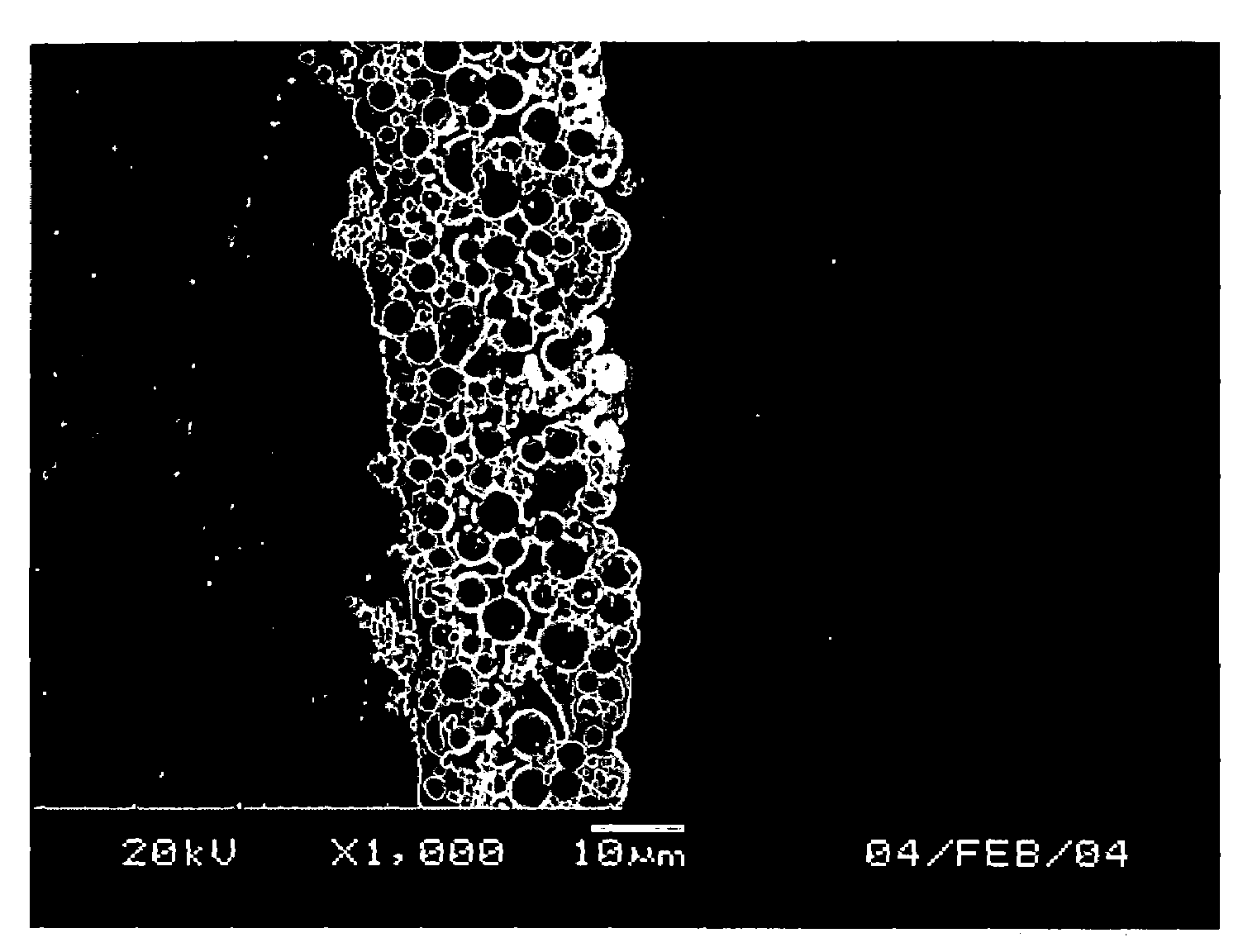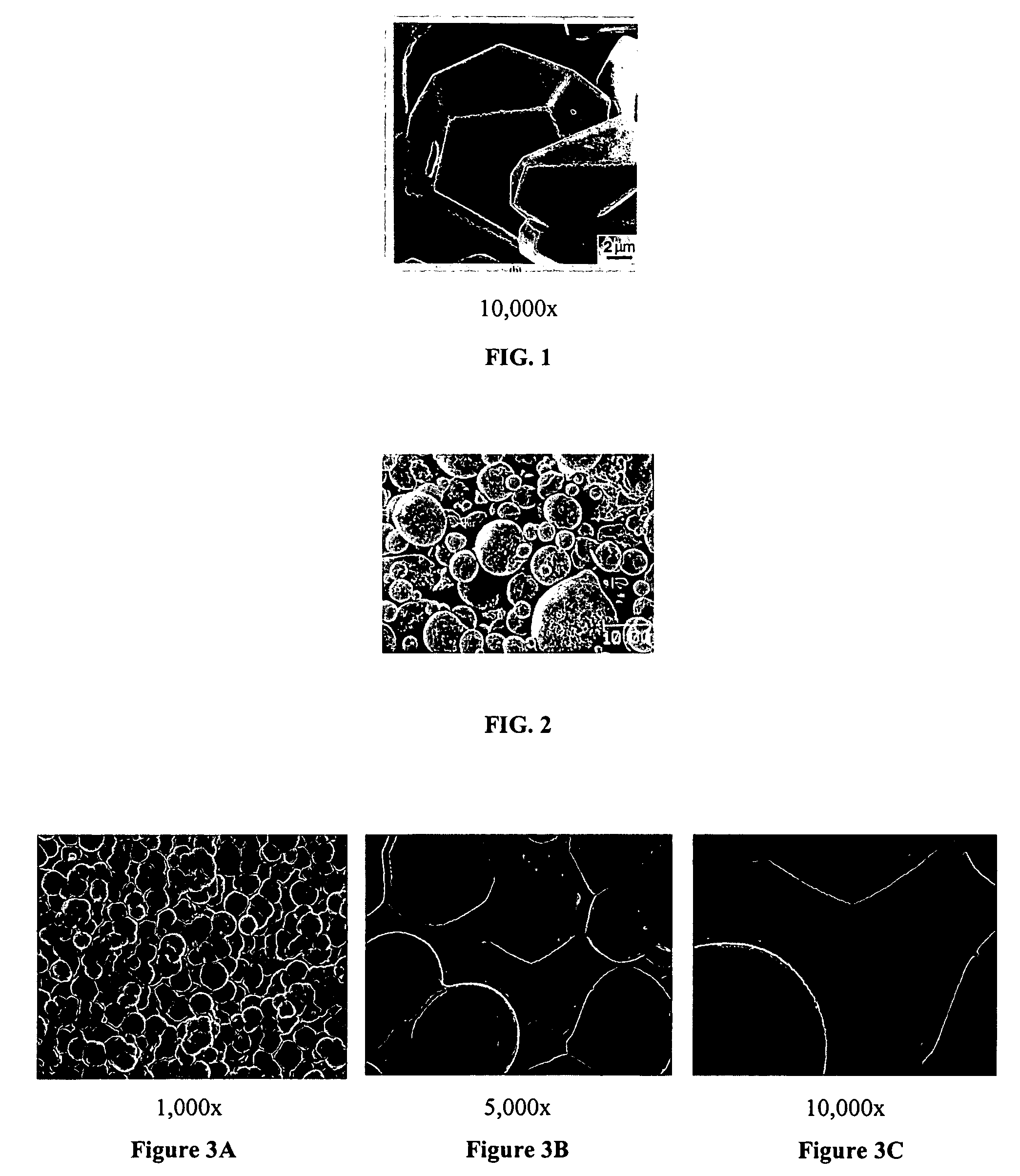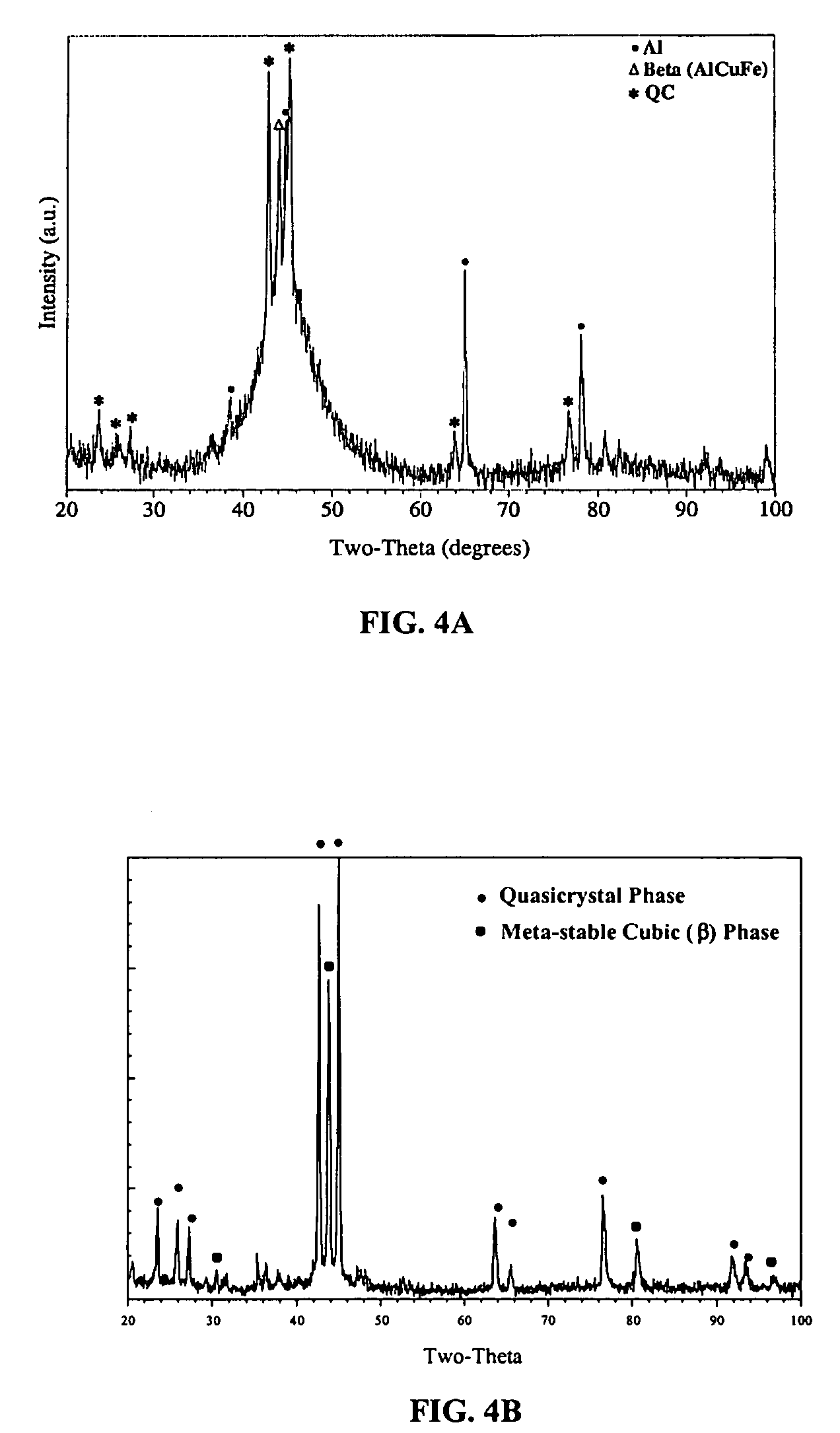Compositions and coatings including quasicrystals
a quasi-crystal and composition technology, applied in the direction of electrolytic coatings, coatings, etc., can solve the problems of poor reproducibility, difficult control of formation parameters, and materials that have not found their way into many commercial applications
- Summary
- Abstract
- Description
- Claims
- Application Information
AI Technical Summary
Benefits of technology
Problems solved by technology
Method used
Image
Examples
example 1
Electrocodepositon of a Composite Coating Incorporating a Quasicrystalline Metal Alloy Material and Nickel Metal
[0064]A substrate having the dimensions 2 inches by 1 inch by 0.03 inches thick made of alloy 3004 aluminum was prepared by bead blasting to white metal, degreased in a commercial degreaser for 5 minutes at 60° C., etched in a deoxidizer for 5 minutes at ambient temperature, electroless zincated for 75 seconds, and finally an electroless copper strike was applied for 15 seconds. The substrate was thoroughly rinsed in 15 MegaOhm deionized water following each of these steps. Final loading of the precoat was 0.27 mg zinc / cm2 and 0.12 mg Cu / cm2.
[0065]An aqueous electroplating bath containing nickel sulfate (5.8 grams nickel / L) and sodium hypophosphite was agitated sufficiently to uniformly suspend less than 20 micron particle size Al65Cu23Fe12 quasicrystalline metal alloy particles (77 g per liter). The pH of the solution was between 4.62 and 3.95. The temperature of the bath...
example 2
Electrocodepositon of a Composite Coating Incorporating a Quasicrystalline Metal Alloy Material and Nickel Metal and Including the Use of a “Seal” Bath
[0066]A substrate having the dimensions 2 inches by 1 inch by 0.03 inches thick made of alloy 3004 aluminum was prepared by bead blasting to white metal, degreased in a commercial degreaser for 5 minutes at 60° C., etched in a deoxidizer for 5 minutes at ambient temperature, electroless zincated for 75 seconds, and finally an electroless copper strike was applied for 15 seconds. The substrate was thoroughly rinsed in 15 MegaOhm deionized water following each of these steps. Final loading of the precoat was 0.27 mg zinc / cm2 and 0.12 mg Cu / cm2.
[0067]An aqueous electroplating bath containing nickel sulfate (5.8 grams nickel / L in aqueous solution) was agitated sufficiently to uniformly suspend less than 20 micron particle size Al65Cu23Fe12 quasicrystalline metal alloy material (40 g per liter). The pH of the solution was maintained at 4.6...
example 3
Annealing a Composite Coated Substrate where the Composite Incorporates a Quasicrystalline Metal Alloy Material
[0070]Substrates coated with a quasicrystalline metal alloy-containing composite coating in accordance with Example 1 were annealed by heating them in an oxygen free (Argon) atmosphere, in a sealed quartz tube, to a temperature of 425° C., held at this temperature for four hours, and allowed to cool to ambient (cooling not controlled). The annealed quasicrystalline metal alloy-containing composite coatings retained their surface energy properties as shown by a sessile water droplet contact angle measurement of 104.9 degrees. Also, the annealed composite-coated substrates retained low coefficients of friction (μ=0.25) and good wear characteristics during pin-on-disk tests (passed 10 minutes of testing with no measurable scar).
PUM
| Property | Measurement | Unit |
|---|---|---|
| Temperature | aaaaa | aaaaa |
| Temperature | aaaaa | aaaaa |
| Temperature | aaaaa | aaaaa |
Abstract
Description
Claims
Application Information
 Login to View More
Login to View More - R&D
- Intellectual Property
- Life Sciences
- Materials
- Tech Scout
- Unparalleled Data Quality
- Higher Quality Content
- 60% Fewer Hallucinations
Browse by: Latest US Patents, China's latest patents, Technical Efficacy Thesaurus, Application Domain, Technology Topic, Popular Technical Reports.
© 2025 PatSnap. All rights reserved.Legal|Privacy policy|Modern Slavery Act Transparency Statement|Sitemap|About US| Contact US: help@patsnap.com



